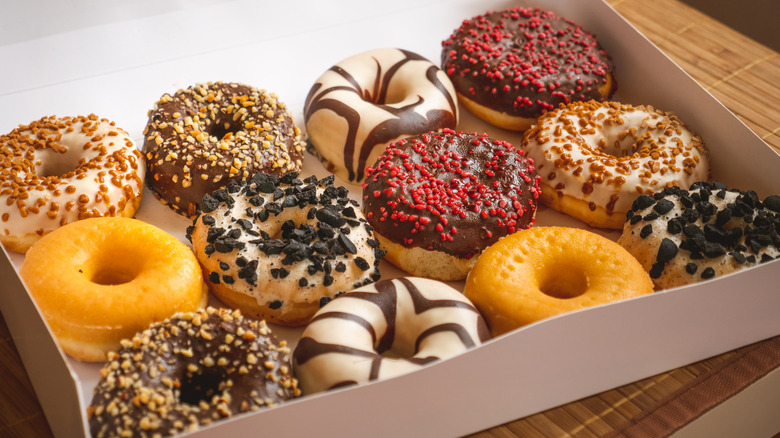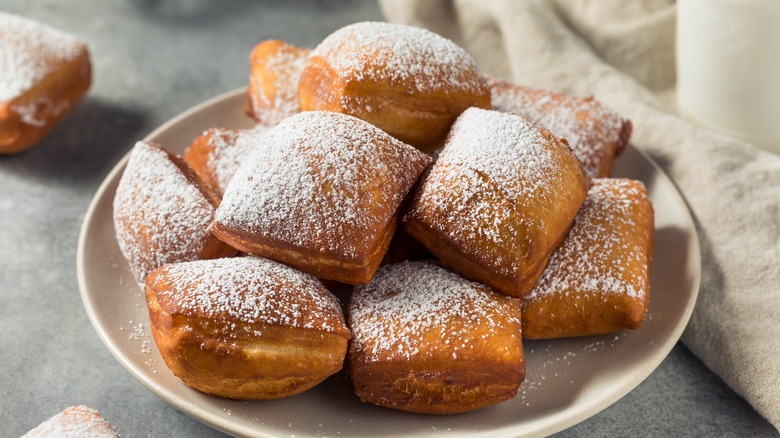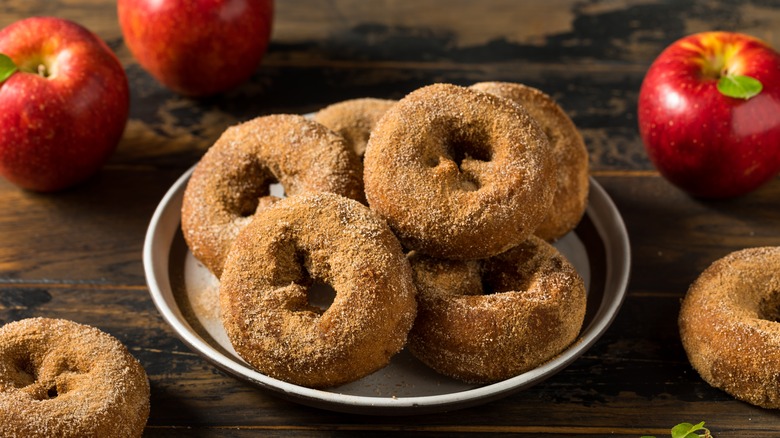The Texture Difference Between Cake And Yeast Donuts
Whether you enjoy filled donuts, long johns, fritters, or crullers, you can't really go wrong when picking out a donut to enjoy with a morning cup of coffee — they are all a delight. Although there are many different kinds of donuts to choose from, they ultimately tend to fall into one of two categories: cake and yeast donuts.
The primary difference between the two styles comes down to the leavening agent used. Light and fluffy yeast donuts are made from dough prepared with yeast, so they need to proof and rise before being shaped and deep-fried. Cake donuts don't rely on yeast for leavening; instead, they use baking powder or baking soda, similar to how you would make a cake batter. These denser treats can be baked into a ring shape, or piped into a circle and deep-fried.
Diners tend to fall passionately into team yeast or team cake when it comes to donuts, with each type having its benefits and drawbacks in terms of taste, texture, and topping options. However, no matter which type is your favorite, if you bring home a dozen from the bakery, be sure to store your fresh donuts properly to make sure they don't get stale.
The unique texture of yeast donuts
When yeast is used as a leavening agent, it creates a texture that is very different from that of cake donuts. As the yeast ferments, it creates air pockets within the dough, making them far lighter. They boast a delightfully delicate and crisp exterior from being deep-fried, with a puffy, chewy interior. The base flavor is not overly sweet, and carries a slight tang from the yeast's fermentation process, similar to brioche.
Yeast donuts are the best choice for making filled donuts, because the air pockets inside are perfect for injecting with cream or jam. If you are a fan of jelly-filled donuts or Boston creams, then you are definitely on team yeast.
The airy nature of a yeast donut pairs naturally with light icing and toppings so the donut isn't weighed down, which might explain why a dusting of powdered sugar is a popular topping for this variety. For example, beignets, the quintessential dessert of New Orleans, are yeast donuts.
Cake donuts are built for topping and dunking
Cake donuts have a texture that is denser and has a distinct crumb. In terms of flavor, they are rich and buttery. These heartier donuts can often handle heavier frostings and more toppings than their yeasted counterparts.
One example of a cake donut is a glazed old-fashioned. These classic donuts are often made with sour cream or buttermilk in the batter to activate the leavening agent. They are ideal for people who love dunking their donut in a cup of coffee. Cake donuts can not only handle the extra moisture from dunking, but they also have a compact texture, so you might want to have a beverage nearby to help wash them down.
Another example of a typical cake donut is the sugar-dusted apple cider donuts, a beloved fall treat that can also be baked in a special donut-shaped pan. They are frequently the type of donut people like to make at home, because it avoids the mess and hassle of deep-frying.



